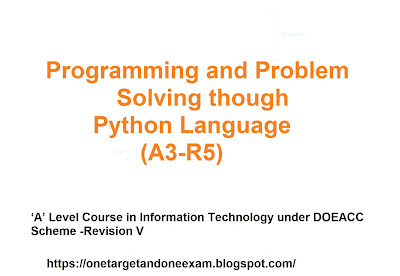E-mail - Computer GK in Hindi | Bank PO , Clerk / Railway / CCC / SSC / Computer Assistance(State Level) / All Gov. Exam
Introduction : इस Post में E-mail Topic को Detail से बताया गया है जो आपके सभी Exam में काफी helpful होगा |
 |
E-mail - Computer GK in Hindi | Bank PO , Clerk / Railway / CCC / SSC / Computer Assistance(State Level) / All Gov. Exam
|
E-mail [ Electric Mail ]
Definition : It is process of sending and receiving message , files from one place to another place. ( Invented by Ray Tomlinson in 1971 )
OR
E-mail is similar to writing a letter to recipients but transmitted in electronic medium, It is also called Electronic mail.
Structure of Email address - abs123@gmail.com
1. Here abs123 is userid. (यहाँ abs123 यूजरआईडी हैं | )
2. Here gmail is domain name. (यहाँ gmail डोमेन नाम हैं | )
3. No space are allowed.
Other domain name -
.com - commercial
.edu - education
.gov - government
.mil - military
.net - network
.org - organization
Parts of Email -
- Compose - This option is used to send any E-mail to another person / place. Here we provides some option(functions) which is helpful -
- To -
- CC (Carbon Copy) - when we send any email, in carbon copy(cc) , sender address written in CC is displayed in remaining receivers inbox.
- BCC (Blind Carbon Copy ) -
- Subject - The main headline(Title) of email is written in this place. ( इस स्थान में ईमेल का मुख्य हैडलाइन (शीर्षक) लिखा जाता हैं। )
- Attachment -
- Insert Link(CTR + K) -
- Send -
- Forward - The content / mail already present in mail box and it is sent to another person through forward option. ( यदि किसी व्यक्ति दवारा किसी ईमेल को भेजा जाता है तो नयी ईमेल बनाने से बचने के लिए हम फॉरवर्ड का उपयोग करते है। )
- Inbox
- Starred
- Snoozed
- Sent mail (Send box)
- Important
- Chats
- Draft - The important documents / mails / data / attachments can be stored but which is not sent , is stored in Draft.
- Spam - The unsolicited and junk mails are stored in this place. ( इस स्थान पर अनचाही और जंक मेल संग्रहित होती हैं। )
- Trash - The deleted items from mail box is moved to Trash. It is similar to Recycle Bin. ( मेल बॉक्स से हटाए गए आइटम को ट्रैश में स्थानान्तरित कर दिया गया है। यह रीसायकल बिन के समान हैं। )
- Categories-
Terminology which is used in E-mail -
- Sign in
- Sign out
- Authenticatoin - The process of verifying the username and password is called. ( उपयोगकर्ता नाम और पासवर्ड को सत्यापित करने की प्रकिया को प्रमाणीकरण कहा जाता हैं | )
- Sign up process - The process of creating an account by providing our details to the server for their confirmation.
- Captcha Code
- POP
- POP3
- SMTP ( Simple Mail Transfer Protocol ) -
- IMAP ( Internet Message Access Protocol ) -
Computer terminology -
" Protocol " , " Topology " , " DNS " , " Web Server " , " HTML " , " TCP / IP " , " Machine Code "


















